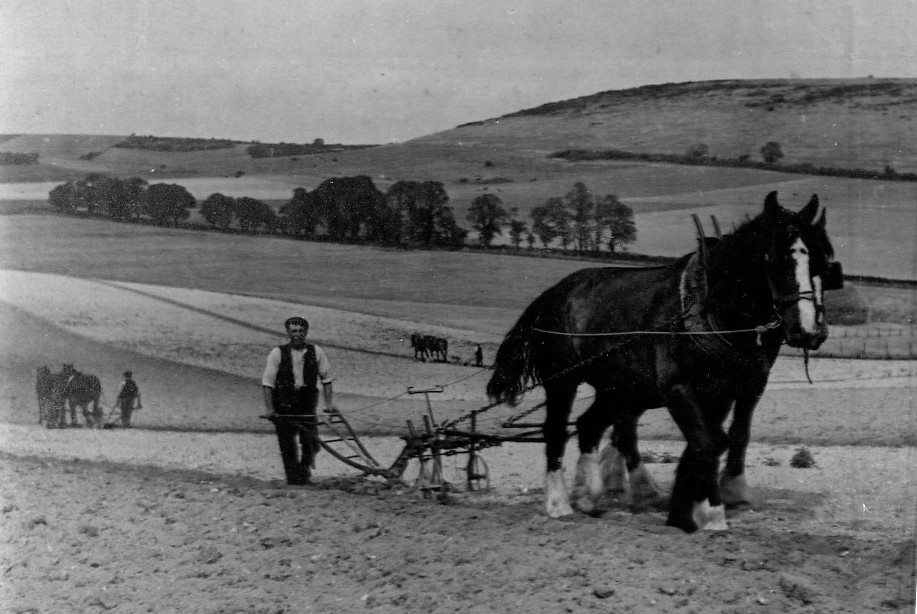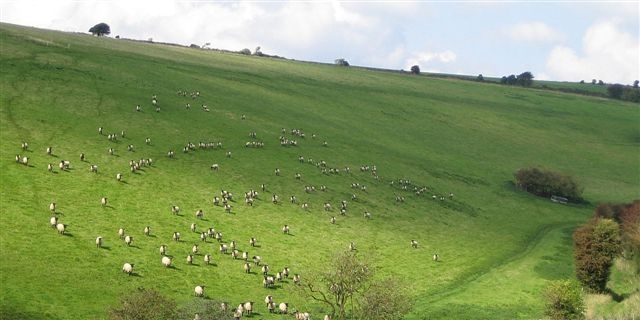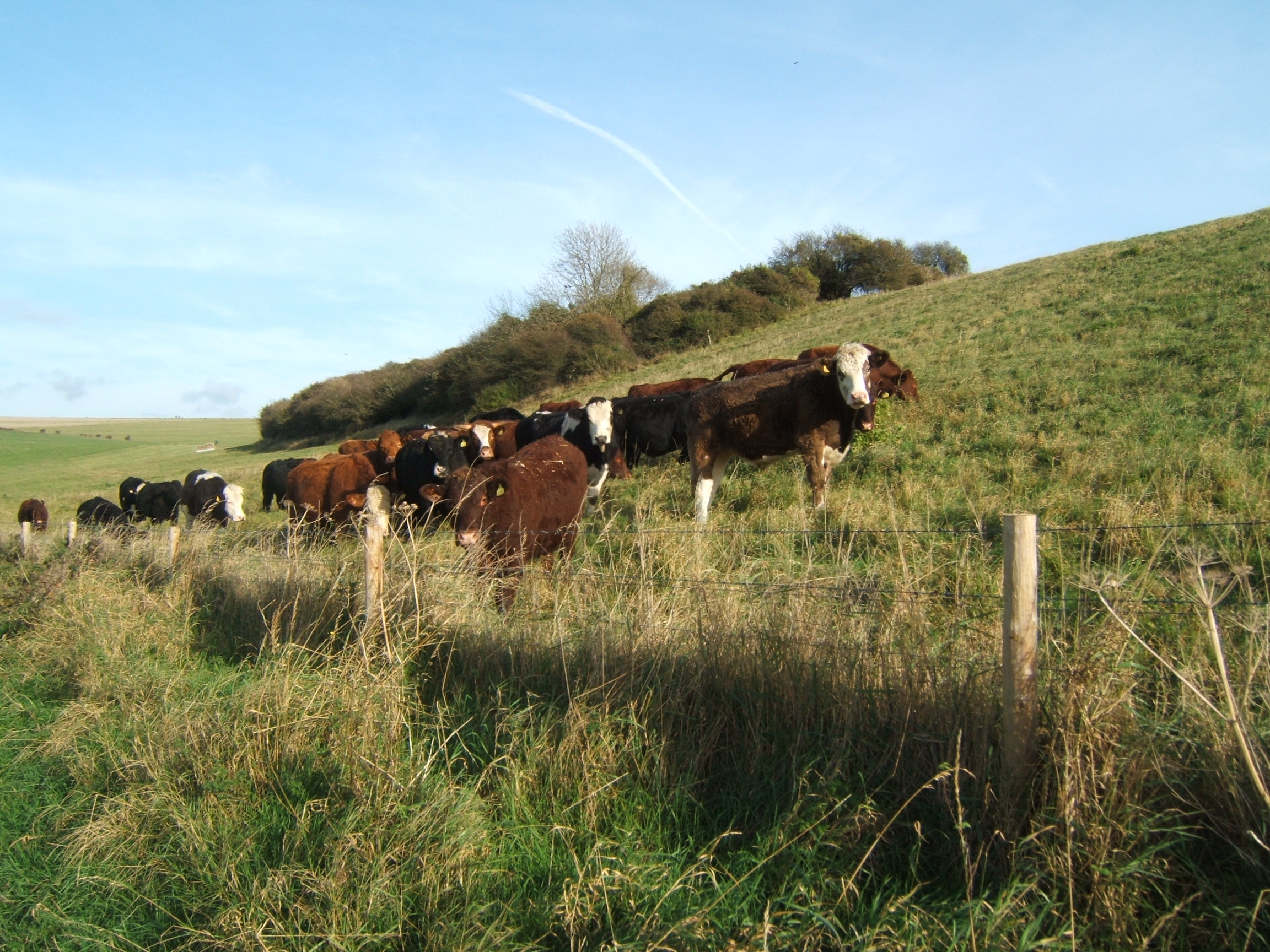Farming with Nature, in Sompting
After reading about how we farm with nature,
find out more about each of our farms on this link.

Traditional farming systems
For centuries there was mixed farming on the Sompting downs. Some slopes were permanent flower-rich pasture, and some were in arable. The arable land would by turns have cereal or brassica crops or temporary grass leys. The grazing sheep and cows were important not only for their wool meat and milk, but also because their dung naturally fertilized the arable ground. Soil and wildlife were fairly well conserved but this changed in the second half of the twentieth century.Twentieth century changes
After World War Two, it was so important to feed the hungry nation that much more of the downland was ploughed up. Chemical fertilizers and pesticides allowed continuous production of winter wheat without need of animals. Upton Farm had fewer cattle than before, and hardly any sheep but for a small Southdown Sheep breeding flock. Lychpole was without animals altogether. The farms achieved the big output increases that were demanded, but it was not sustainable, and the downland wildlife was suffering as the new farm habitats no longer met their needs.Farming both for Food and for the Environment
A new approach was developed, to make the business of farming for the environment viable for farmers, alongside the business of producing food, in spite of the fact that the market (now mainly supermarkets) was not paying enough for this, and food was making up an ever smaller proportion of people's household budgets.
From about 1980 onwards, the Sompting Estate owners had already begun a program of conservation measures to protect and enhance valued downland habitats such as species-rich chalk grassland. From about 2000 onwards, together with new farm tenants at Upton and Lychpole they restored a more traditional system of sheep and cattle grazing to the Sompting downs, first with re-sown grasslands at Upton and then at Lychpole from 2007 restoring grasslands alongside mixed rotational arable including spring barley and feed crops.South of the A27, in 2013 Church Farm also entered its brooklands into the Higher Level Agri-Environment Scheme for conservation management. On the east side, the Estate had purchased most of Cokeham Brooks SNCI, a rare remaining flushed fen habitat, from the former developers of the Ullswater Road area in order to manage it for conservation in the traditional way. Bill Lindfield had shared memories of working on this land as a farm boy in the 1940s and the plan was to restore those traditional land management methods. After many surveys and careful planning, seasonal livestock grazing and other conservation management of these brooklands was introduced in 2014, complementing the more intensive farming on Church Farm's drier fields.The result of these changes is that the soil is improved, insects and birds thrive, and the whole system is more self-sustaining, with animal feed crops as well as food crops being grown on the farms.Land management keeps changing in response to – for example - the weather, soil condition, the market for meat and for crops, the needs of the wildlife and the other people who have an interest in the land. In response to the results that were achieved at Lychpole, a more diverse system was then also implemented at Upton; this journey continues for Church Farm and Titch Hill..
This landscape and environment management system, where rotational grazing brings life back to the soil in nature's way, depends on livestock farming being profitable. So if you love the grassy downland, please eat local meat and other foods and be prepared to pay a fair price for them.

